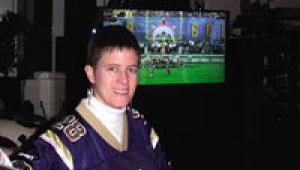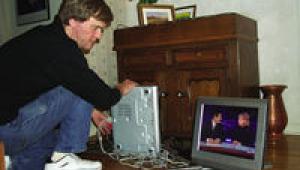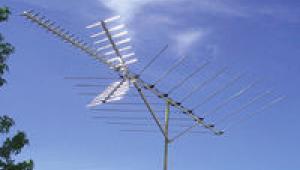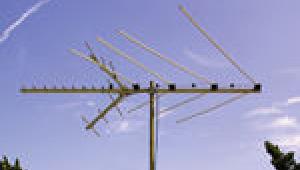Home Theater Boot Camp: Receiving HDTV Page 2
To grab, decode, and convert HDTV signals into a form that's usable by the TV, you'll need an HDTV tuner. A true HDTV has a tuner built into its display. There are very few displays with built-in tuners, and for good reason: Tuner technology has advanced further and faster and has gotten cheaper than display technology. You're generally better off with an HD monitor (a display without an HDTV tuner) that can be coupled with a tuner now or in the future.
Once you've determined what sources are available to you, you can narrow down the vast number of tuner options. If DTV on cable is an option, you can receive the signals via a tuner available from your cable provider or possibly from a terrestrial tuner. Otherwise, terrestrial tuners can only pick up over-the-air signals and, until recently, were expensive. Fortunately, most high-definition satellite receivers can also tune terrestrial signals and, subsequently, some cable signals. There are many more HD-DBS receivers on the market now than there were a year ago, and compatibility problems between these tuners and various displays are mostly limited to connection type.
Step 3: The Tuner/Display Interface
In reality, you'll probably buy the TV before the tuner. Just be sure to read step 1 before you go to step 2. Regardless, the TV must be able to accept the tuner's signal. Most HDTV signals are transmitted from the tuner to the display via one of two different analog forms: Y/Pb/Pr (aka component) or five-wire RGBHV (also technically known as component, but it's usually referred to as just RGB). Two different digital-signal types, IEEE 1394 (aka FireWire) and DVI/HDCP may appear in coming months. Y/Pb/Pr uses three colored plugs, but its signal has a wider bandwidth than that used for DVD. A TV with a component DVD input doesn't guarantee HDTV compatibility. RGB uses five connectors. Both analog formats can utilize professional-style BNC connectors, regular phono plugs, or a computer-monitor-like D-Sub 15-pin connector. FireWire connectors are small U-shaped jacks, while DVI uses a multipin connector.
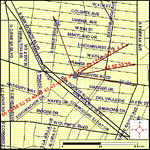 |
| The CEA's antenna Website will provide you with a map that displays where the local stations' transmitters are in relation to your home. |
The most important thing is that both the tuner and the display use the same signal type. In other words, a tuner with a Y/Pb/Pr output must connect to a TV with wide-bandwidth Y/Pb/Pr inputs. The more signal types a TV can accept (or a tuner can output), the better. Connectors are easily converted; signal types are not. You can get a BNC-to-phono converter for a few bucks, but an RGB-to-Y/Pb/Pr transcoder (or vice versa) will set you back a few hundred dollars.
The general trend in the industry seems to be moving toward digital connectors, which offer a cleaner signal path and studio-mandated copy protection. Most manufacturers support FireWire for its networking capability and ability to be legitimately recorded. Mitsubishi and Sony have already introduced models with IEEE 1394 inputs, but these sets also have analog inputs. DVI signals, while less expensive to implement in the display, are too large to be recorded. There's undoubtedly going to be some backwards-compatibility, as new sets will have both analog and digital inputs.
I should point out that there are unsubstantiated rumors, specifically in regard to satellite and cable signals, that future tuners might only offer digital HDTV outputs and that unauthorized HD signals will be downconverted for the analog outputs on these and any existing satellite receivers. Hollywood is certainly pushing for this scenario, but most of the people I've talked to argue that this will never happen. If this did occur, it would not apply to terrestrial signals and might only apply to some movie programming. Only one manufacturer, Mitsubishi, has made an official pledge to upgrade existing sets to accommodate a digital signal.
Also, while some tuners and displays offer various scan-rate outputs (i.e., 720p or 1080i), most TVs will accept any scan rate and internally convert the signal to the rate needed for the display. This may be a concern for videophiles (an issue for a different article) but won't usually be an issue in terms of receiving and viewing HDTV signals. If you're concerned, make sure the tuner's output scan rate matches the display's input and that the number is at least 720 lines or higher.
No matter what, the future of HDTV is certain. Congress has mandated that analog-TV transmissions cease and that digital broadcasts take over. While the transition may be difficult, this three-step plan will hopefully clear up any confusion. All you need is a source—be it an antenna, satellite dish, or cable signal—a tuner, and a compatible display. Upon completion of the plan, you should be enjoying HDTV, along with that cocktail of choice.

